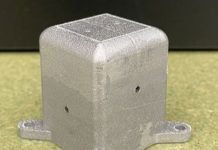
Every day, millions of people take to the skies on airplanes.
And just like cars need regular check-ups, airplanes do too.
It’s super important to make sure they’re in good shape, especially since they’re dealing with things like rough weather and the simple wear and tear of flying so often.
But here’s the thing: checking an airplane isn’t like checking a car. Even the tiniest of damages on a plane, ones you can’t see, can be risky.
So, people who look after planes have a big job! In the past, they had to look over every inch of an airplane with their eyes to spot any dents or scratches.
But as you can guess, that’s not the most efficient way. That’s where a new method comes in – it’s called structural health monitoring, or SHM for short.
What is SHM? Think of it like a health tracker for airplanes. Instead of relying only on human eyes, we use cool gadgets like sensors to keep a watch on the plane’s health. These sensors can quickly figure out if something’s wrong.
Researchers at NC State University are coming up with new ways to use this technology, and they’re especially excited about cameras.
Here’s a fun fact: today’s planes aren’t just made of metal. They’re built with materials called composites, which are lighter and stronger.
But these composites have a sneaky side. If something hits them, like hailstones or maybe a tool during repairs, they don’t always show obvious damage on the outside. The real damage might be hidden underneath.
That’s a problem because these hidden damages can make the plane weaker.
Now, here’s where the cameras come in. These researchers are trying to use cameras to “see” these hidden damages. How? By looking at how the surface of the plane moves.
Imagine you throw a stone into a pond. The stone will make ripples or waves in the water. In the same way, if there’s damage underneath the surface of the plane, it can make special kinds of “waves” or vibrations. By using a camera to watch these vibrations, the scientists can guess where the damage might be.
To help the camera “see” better, the team paints a special pattern on the plane’s surface, full of tiny dots. When the surface moves or vibrates, the dots move too, and the camera captures all of this. By looking at how these dots shift around, the researchers can get clues about any hidden damage.
They tested this out by making tiny damages on some test panels (don’t worry, not on real planes!). They used their camera method and – voilà! – they could spot where the damages were, even if they were hidden below the surface.
Of course, painting planes with dots every time we want to check them isn’t very practical. So, the next step? The team is thinking of using a projector. Instead of painting, they’ll just project these special dot patterns onto the plane. And if they can get that to work, there are lots of exciting possibilities ahead!
Imagine this: drones flying around airplanes, equipped with these special cameras, scanning for any hidden issues. Or maybe one day, there’s even an app on our phones that can do the same thing.
And with more and more talk about reusing rockets and spaceships, this camera trick could also be used to make sure they’re safe for another trip to space.
In a nutshell, the aim is to make checking planes quicker, smarter, and safer. And who knows, next time you’re at the airport waiting for your flight, you might just see one of these camera-equipped drones buzzing around, ensuring your plane is in top-notch condition for your journey!
Follow us on Twitter for more articles about this topic.



